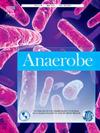乳杆菌和阴道加德纳菌在阴道介质中的代谢
IF 2.6
3区 生物学
Q3 MICROBIOLOGY
引用次数: 0
摘要
目的:本研究评估阴道定义培养基(VDM)与脑心灌注(BHI)培养基相比,如何很好地复制关键阴道微生物群成员的体内代谢行为- crispatus乳杆菌,L. jensenii和多种阴道加德纳菌分离株。方法采用核磁共振(1H NMR)技术对乳酸菌和加德纳菌在体外生长过程中的代谢谱进行表征。评估了代谢物产生、生长、酸化和碳水化合物利用的差异。结果crispatus和L. jensenii在VDM中生长良好,产生的乳酸含量明显高于BHI,并且对培养物的酸化作用更强,更好地反映了乳酸菌优势阴道微生物群的低pH环境。相比之下,阴道弧菌在VDM中的生长不如在BHI中的健壮,尽管双歧杆菌分流和混合酸发酵等关键代谢特征(由甲酸产生证明)得以保留。值得注意的是,这两个属都不消耗可利用的葡萄糖,但仍然发酵碳水化合物,这表明代谢倾向于糖原而不是葡萄糖。葡萄糖释放的证据进一步表明糖原在培养中分解。结论svdm比BHI更准确地模拟阴道乳杆菌的代谢活性和环境效应,特别是在酸化和乳酸生成方面。尽管阴道丝虫病在VDM中生长受限,但其特有的代谢途径仍然很明显。这些发现强调了VDM在模拟阴道微生物群关键代谢特征方面的价值,特别是在乳酸菌占主导地位或加德纳菌普遍存在的情况下。本文章由计算机程序翻译,如有差异,请以英文原文为准。
Metabolism of Lactobacillus and Gardnerella vaginalis in vaginal defined media
Objectives
This study evaluates how well a vaginal defined medium (VDM) replicates the in vivo metabolic behaviour of key vaginal microbiota members - Lactobacillus crispatus, L. jensenii, and diverse Gardnerella vaginalis isolates - compared to brain heart infusion (BHI) medium.
Methods
We used 1H NMR spectroscopy to characterise metabolic profiles during in vitro growth of Lactobacillus and Gardnerella species in VDM and BHI. Differences in metabolite production, growth, acidification, and carbohydrate utilisation were assessed.
Results
Both L. crispatus and L. jensenii grow well in VDM, produce substantially more lactate than in BHI, and acidify the culture more strongly - better reflecting the low pH environment of Lactobacillus-dominant vaginal microbiota. In contrast, G. vaginalis grows less robustly in VDM than in BHI, though key metabolic traits such as the Bifidobacterium shunt and mixed acid fermentation (evidenced by formate production) are preserved. Notably, neither genus consume available glucose, yet still ferment carbohydrates, suggesting a metabolic preference for glycogen over glucose. Evidence of glucose release further indicates glycogen breakdown in culture.
Conclusions
VDM more accurately models the metabolic activity and environmental effects of vaginal Lactobacillus species than BHI, particularly in terms of acidification and lactate production. Although G. vaginalis growth is limited in VDM, its characteristic metabolic pathways remain evident. These findings underscore the value of VDM in modelling key metabolic features of the vaginal microbiota, especially under conditions where Lactobacillus dominate or Gardnerella is prevalent.
求助全文
通过发布文献求助,成功后即可免费获取论文全文。
去求助
来源期刊

Anaerobe
生物-微生物学
CiteScore
5.20
自引率
8.70%
发文量
137
审稿时长
76 days
期刊介绍:
Anaerobe is essential reading for those who wish to remain at the forefront of discoveries relating to life processes of strictly anaerobes. The journal is multi-disciplinary, and provides a unique forum for those investigating anaerobic organisms that cause infections in humans and animals, as well as anaerobes that play roles in microbiomes or environmental processes.
Anaerobe publishes reviews, mini reviews, original research articles, notes and case reports. Relevant topics fall into the broad categories of anaerobes in human and animal diseases, anaerobes in the microbiome, anaerobes in the environment, diagnosis of anaerobes in clinical microbiology laboratories, molecular biology, genetics, pathogenesis, toxins and antibiotic susceptibility of anaerobic bacteria.
 求助内容:
求助内容: 应助结果提醒方式:
应助结果提醒方式:


